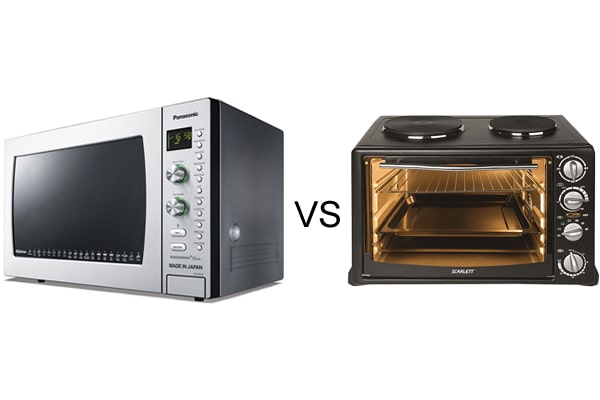Unravel the fascinating distinctions between the globally recognized retail giants, Walmart and Walmart Supercenters, in our insightful blog post. Embark on a historical journey back to 1962, when Sam and James Walton ignited a retail revolution, giving birth to Walmart Inc., now the world’s largest company in terms of revenue. Understand the evolution from Walmart’s traditional discount stores, offering general merchandise and select groceries, to the increasingly popular Walmart Supercenters, a one-stop shop for virtually everything you could need.
This post walks you through the significant differences between the two retail formats, from the typical size of Walmart’s discount stores, spanning from 2,800 to 20,500 square meters, to the expansive Supercenters. Dive into a bit of cinema trivia too, as we reveal how a Walmart Supercenter in Calgary served as a backdrop for a memorable scene in Ghostbusters: Afterlife.
Learn about the unique features that make Supercenters so beloved by customers, such as the ‘greeters’, a hallmark of the Supercenter experience. Despite the change to ‘customer hosts’ in 2019, these friendly faces remain an essential part of the Walmart experience. Let’s explore this tale of retail evolution and see what the journey from Walmart to Supercenters tells us about changing consumer preferences and the future of retail.
What Is Walmart
Walmart, the iconic family-owned discount store, is a retail behemoth renowned for its considerable impact on customer welfare, particularly among the less affluent population segments. Its competitively priced goods are estimated to save customers an astounding 200 billion dollars a year, surpassing even government initiatives such as the Supplementary Nutrition Assistance Program and Earned Income Tax Credits in terms of financial savings.
However, this retail titan’s success is not without its repercussions. For small-town retailers, the arrival of a Walmart often results in substantial business losses. Yet, Walmart’s claim that two-thirds of its merchandise is made, assembled, or grown in the US, shows its commitment to domestic industries.
Walmart’s dominance in the retail sector is testament to its relentless pursuit of technological innovation and efficiency. Its online business has grown substantially, with customers who shop both in-store and online spending the most. This seamless blend of online and physical retailing has allowed customers the convenience of in-store pickups for online orders, often translating into additional in-store purchases.
Yet, like all giants, Walmart has faced its share of trials. Its aggressive cost-cutting measures, such as replacing cashiers with self-checkout stations, led to increased crime rates, resulting in heavy criticism. In response, CEO Doug Milligan took extensive measures, including implementing sophisticated surveillance systems and theft-prevention programs, to reduce crime rates.
Despite these efforts, tragedies like the June 2020 shooting remind us that challenges remain. Walmart has also faced criticism for gender discrimination, with claims that only 33% of management roles are held by women. In response, Walmart clarifies that it classifies its employees differently, with women constituting about 60% of departmental managerial roles.
What Is Walmart Supercenter
Introduced in 1998, Walmart Supercenters have become a retail sensation. These hypermarkets offer a one-stop shopping experience at low prices, a characteristic that makes them irresistible to customers. Whether you’re in for groceries or a new electronic gadget, a Walmart Supercenter is the place to go. Feeling hungry while shopping? You’ll find outlets like Subway, McDonalds, and in some locations, even Burger King, within these colossal retail hubs.
Beyond being mere grocery stores, Supercenters feature delis, dairy sections, fresh seafood, and even non-food departments like pet shops, pharmacies, hair and nail salons, photo-processing labs, and local bank branches. Depending on the location, you might also find garden centers, optical centers, Tire & Lube Express, cellular phone stores, and video rental stores.
Despite often being referred to as simply ‘Walmart’, these Supercenters are still branded as ‘Supercentre’ in Canadian stores. They dot the US landscape, with hundreds present in states like Texas, Florida, Georgia, and California.
The presence of Walmart Neighborhood Markets within Supercenters fills market gaps that neither Discount stores nor Supercenters can. While some perceive Supercenters as harmful to small businesses, there’s no concrete evidence to back this claim. Instead, it’s seen that other retailers have responded by lowering their prices to compete.
While Supercenters have boosted retail job opportunities, they’re also criticized for low wages and minimal benefits for employees. As a result, many employees resort to public assistance programs. This dichotomy creates divided opinions on Walmart’s influence on local economies and welfare, fueling ongoing debates about this retail giant’s impact. Explore more about these Supercenters and their unique characteristics as we dive deeper into this fascinating retail world.
Walmart Vs. Walmart Supercenter
Navigating the differences between Walmart and Walmart Supercenter can be quite revealing. While both offer a plethora of goods, the traditional Walmart store primarily deals with general merchandise. On the other hand, the Supercenter elevates the shopping experience by additionally featuring groceries, meat and dairy products, and a wide array of frozen foods. This expansion of offerings is mirrored in the size too, as Supercenters, with their diverse products, overshadow the more modestly sized Walmart discount stores.
Difference Between Walmart And Walmart Supercenter
Let’s delve into the primary distinctions between the traditional Walmart stores and their larger counterparts, Walmart Supercenters:
- Product Range: Walmart Supercenters are a shopper’s paradise with an extensive range of products, while traditional Walmart stores focus primarily on non-grocery items and general merchandise.
- Additional Facilities: Supercenters go beyond retail, offering added facilities like hair salons, video rental stores, fast food outlets, and even local bank branches.
- Operating Hours: While regular Walmarts operate from 7 a.m. to 8.30 p.m., Supercenters prioritize customer convenience with 24/7 service.
- Store Count: The trend has seen a shift towards Supercenters, boasting 3,572 outlets as of June 2023 compared to 395 traditional Walmart stores.
- Location: Supercenters are strategically placed in densely populated areas to cater to a broad spectrum of customer needs, while Walmart stores are typically found in less populated areas.
- Outdoor and Food Sections: While Walmart stores boast a significant outdoor section, they cannot match the extensive food offerings of Supercenters.
- Shopping Experience: If you’re looking for a wide selection across various categories, a Supercenter is your best bet. However, for quick, convenient shopping, traditional Walmart stores are ideal.
As we delve deeper into these two retail formats, we can better understand the evolution of consumer preferences and the future of retail shopping.
Comparison Table Walmart vs Walmart Supercenter
| Parameter | Walmart | Walmart Supercenter |
| Size | Ranges from 30,000 to 221,000 sq ft, with an average of around 105,000 sq ft. | Ranges from 69,000 to 260,000 sq ft, with an average of approximately 178,000 sq ft. The largest Supercenter is in Albany, New York at 260,000 sq ft. |
| Products | Primarily offers food, clothing/apparel, and household goods such as home furnishings, toys, lawn and garden items. | In addition to general merchandise, Supercenters provide a full range of groceries, including garden produce, meat and dairy products, deli food, frozen foods, and baked goods. |
| Variety | Offers a diverse range of products but less variety compared to a Supercenter. | Offers a broader variety of products and services such as pet shops, pharmacies, photo-processing labs, and more. |
| Place of Operation | Operates in 24 countries. | 3,572 Supercenters are present in 49 out of the 50 US states (Hawaii does not have a Supercenter), the District of Columbia, and Puerto Rico. |
| Origin Year | Founded in 1962 and incorporated on 31st October 1969. | Emerged in 1988 in Washington, Missouri. |
This chart highlights the significant differences between Walmart and Walmart Supercenter, allowing you to understand the unique features and offerings of each store format.
FAQs
What are the main differences between Walmart and Walmart Supercenters?
The main differences lie in their size, product range, variety of services, and operating locations. While both offer a wide array of goods, Walmart focuses more on non-grocery items and general merchandise, while Supercenters feature a more extensive product range, including groceries and services such as hair salons, bank branches, and fast food outlets.
Are Walmart stores open 24/7 like Walmart Supercenters?
No, regular Walmart stores typically operate from 7 a.m. to 8.30 p.m., while Walmart Supercenters prioritize customer convenience with 24/7 service.
Are there more Walmart stores or Supercenters?
As of June 2023, there were significantly more Supercenters, with 3,572 outlets, compared to 395 traditional Walmart stores. This shift reflects the customer preference for the extensive range and convenience offered by Supercenters.
Do Walmart and Walmart Supercenters operate in the same locations?
Walmart operates in 24 countries, whereas Supercenters are predominantly U.S.-based, present in 49 out of 50 states, the District of Columbia, and Puerto Rico.
When were Walmart and Walmart Supercenters founded?
Walmart was founded in 1962 and incorporated in 1969, while the first Walmart Supercenter emerged in 1988 in Washington, Missouri.





